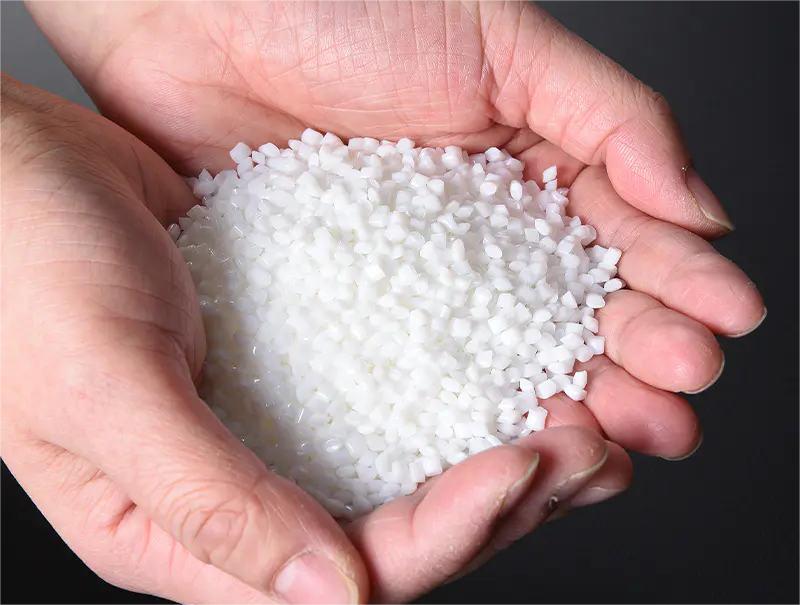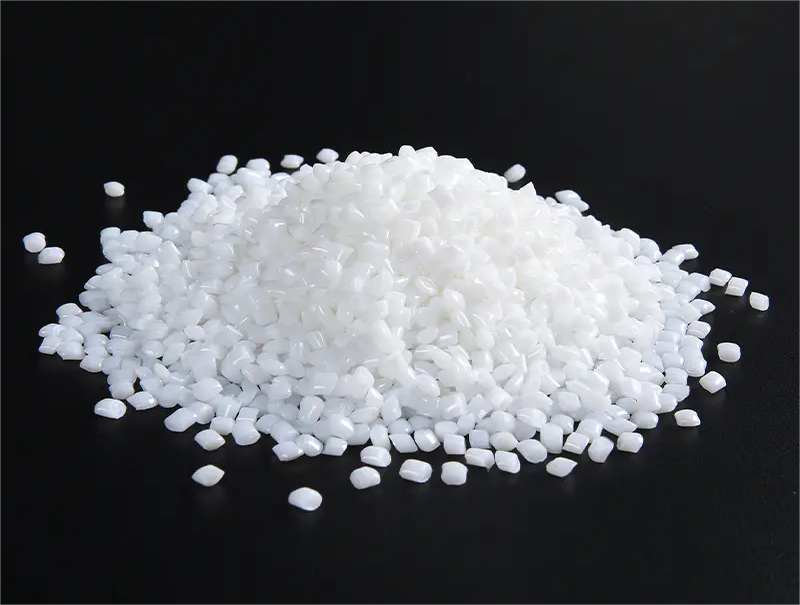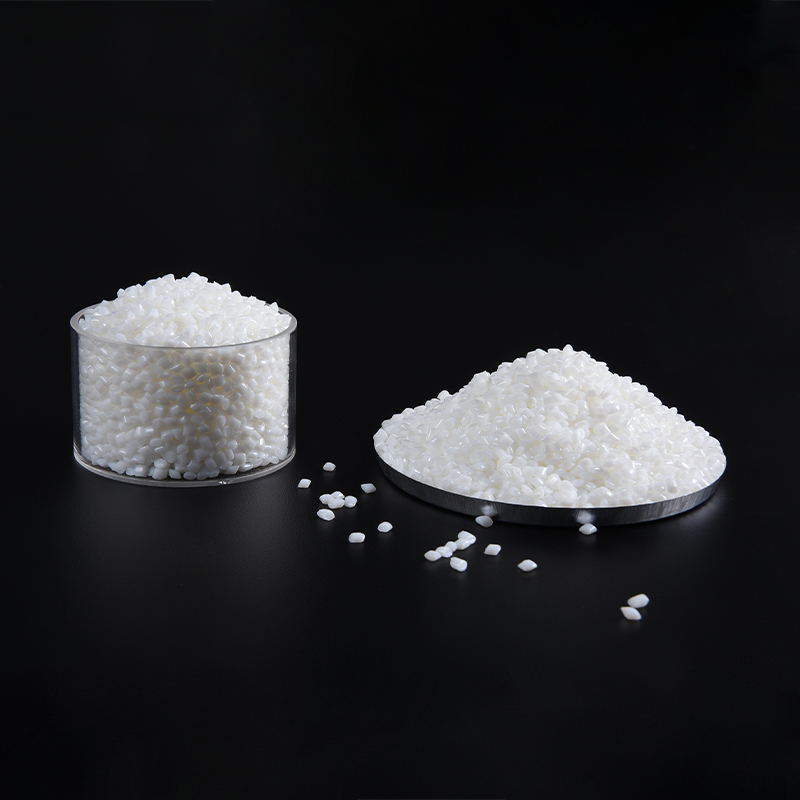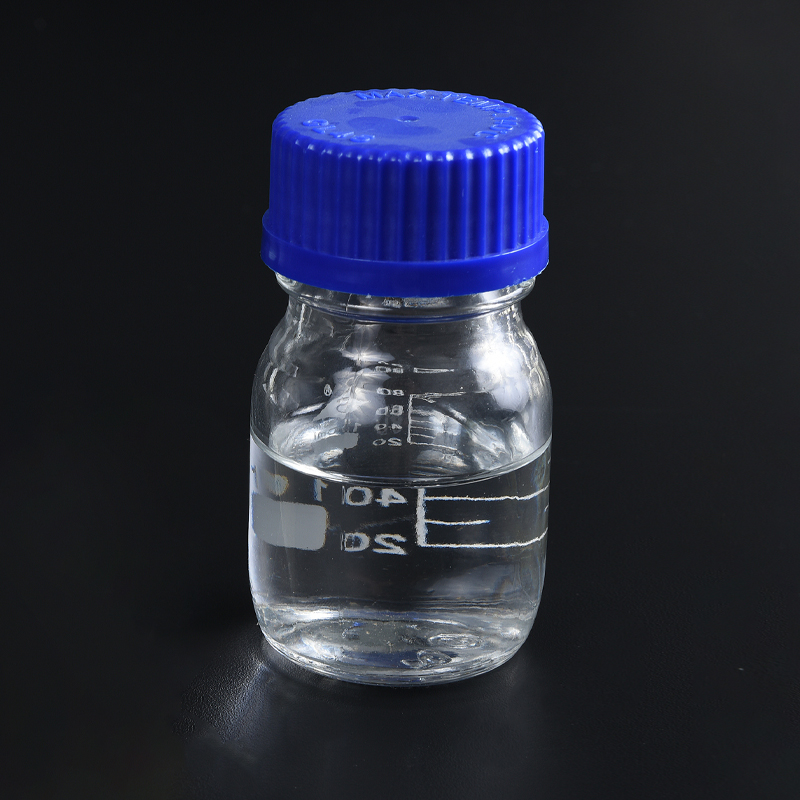Product Consultation
Your email address will not be published. Required fields are marked *

What are the effects of temperature on the performance of MY10 Low viscosity PBT (Injection molding application)
Mar 24,2025
How to improve the insulation performance of MY10 Low viscosity PBT (Injection molding application)
Mar 17,2025
What are the post-processing methods for MY10 Series PBT for Filament Spinning
Mar 10,2025
As an important engineering plastic, polybutylene terephthalate (PBT) has been widely used in electronics, electrical, automotive and consumer products due to its excellent mechanical properties, chemical resistance and good processability. However, the flammability of PBT limits its use in some key applications, so improving its flame retardant properties has become an important topic in materials science research.
In the study of improving the flame retardant properties of PBT, adding flame retardants is the most direct and commonly used strategy. Flame retardants are mainly divided into two categories: inorganic and organic. Inorganic flame retardants such as aluminum hydroxide, magnesium hydroxide and phosphates effectively inhibit the spread of flames through mechanisms such as heat absorption, release of water vapor and formation of protective layers. For example, aluminum hydroxide decomposes at high temperatures, releases water vapor to reduce the surrounding temperature, thereby inhibiting the occurrence of combustion. In contrast, organic flame retardants such as bromides and phosphides generate flame-retardant gases through chemical reactions, reducing the heat and oxygen concentration of the flame. For example, brominated flame retardants decompose at high temperatures, release bromine elements, and form flame-retardant gases to inhibit the spread of flames. When choosing a suitable flame retardant, its compatibility with PBT, processability and impact on material properties need to be considered comprehensively to ensure the stable performance of the final product.
In addition to adding flame retardants, chemical modification is also an effective way to improve the flame retardant properties of PBT. By copolymerizing PBT with other polymers with excellent flame retardant properties (such as polystyrene, polyester, etc.), copolymers with excellent flame retardant properties can be obtained. This method can not only significantly improve the flame retardant properties of the material, but also improve other physical properties of PBT. In addition, graft copolymerization technology forms graft copolymers by grafting monomers with flame retardant properties on the PBT molecular chain, thereby enhancing its flame retardant properties while retaining the basic properties of PBT.
In recent years, the application of nanomaterials has shown good prospects in improving the flame retardant properties of polymers. By adding nanoscale fillers such as nanoclay, carbon nanotubes or nanosilicon to PBT, its flame retardant properties can be significantly improved. Nanoclay, due to its large specific surface area, can form a protective carbon layer during combustion, effectively isolating oxygen and heat, thereby inhibiting the spread of flames. Carbon nanotubes can not only improve the mechanical properties of the material, but also form a conductive carbon layer during the combustion process, further enhancing the flame retardant effect.
Physical modification is also an effective way to improve the flame retardant properties of PBT. By adjusting the processing conditions and structure of PBT, its flame retardant properties can be improved. For example, foaming technology reduces the density and thermal conductivity of the material by introducing a bubble structure, thereby improving its flame retardant properties. In addition, the use of a multi-layer structure design to combine the flame retardant layer with the PBT substrate can effectively prevent the spread of flames and significantly improve the overall flame retardant properties.
What are the advantages of blow molding of PBT resin in the processing process
What to pay attention to when using PBT in outdoor environments
Your email address will not be published. Required fields are marked *

Grade: MY10 series Application: Filament spinning, chemical fiber Performance characteristics: Elasticity, high color fastness, resistance to light aging, and good chlorine resistance.strong weaving p...
See Details
Grade: MY12 series Application: Optics, specialty fibers chemical fiber. Performance characteristics: Hydrolysis resistance, good surface quality, high roundness, high-pressure resistance, high elonga...
See Details
THF Molecular Formula: C4H8O Colorless Transparent Liquid Is widely used in organic synthesis, polymer industry and as organic solvents.
See Details
Grade: MY08 series Application: Electronics and electrical appliances Performance characteristics: Heat aging resistance, good sterilization performance, good solvent resistance RARU Note: Customizati...
See Details
Grade: MY10 series Application: Automotive parts (New energy and hybrid vehicles) Performance characteristics: Heat aging resistance, fatigue resistance.low water absorption. Note: Customization of di...
See Details
Grade: MY10 series Application: Filament spinning, chemical fiber Performance characteristics: Elasticity, high color fastness, resistance to light aging, and good chlorine resistance.strong weaving p...
See Details
Grade: MY12 series Application: Optics, specialty fibers chemical fiber. Performance characteristics: Hydrolysis resistance, good surface quality, high roundness, high-pressure resistance, high elonga...
See Details
THF Molecular Formula: C4H8O Colorless Transparent Liquid Is widely used in organic synthesis, polymer industry and as organic solvents.
See Details
Grade: MY08 series Application: Electronics and electrical appliances Performance characteristics: Heat aging resistance, good sterilization performance, good solvent resistance RARU Note: Customizati...
See Details
Grade: MY10 series Application: Automotive parts (New energy and hybrid vehicles) Performance characteristics: Heat aging resistance, fatigue resistance.low water absorption. Note: Customization of di...
See Details
Grade: MY10 series Application: Filament spinning, chemical fiber Performance characteristics: Elasticity, high color fastness, resistance to light aging, and good chlorine resistance.strong weaving p...
See Details
Grade: MY12 series Application: Optics, specialty fibers chemical fiber. Performance characteristics: Hydrolysis resistance, good surface quality, high roundness, high-pressure resistance, high elonga...
See Details
THF Molecular Formula: C4H8O Colorless Transparent Liquid Is widely used in organic synthesis, polymer industry and as organic solvents.
See DetailsCopyright © 2023 Zhejiang Amerisource New Material Co., Ltd. All Rights Reserved
